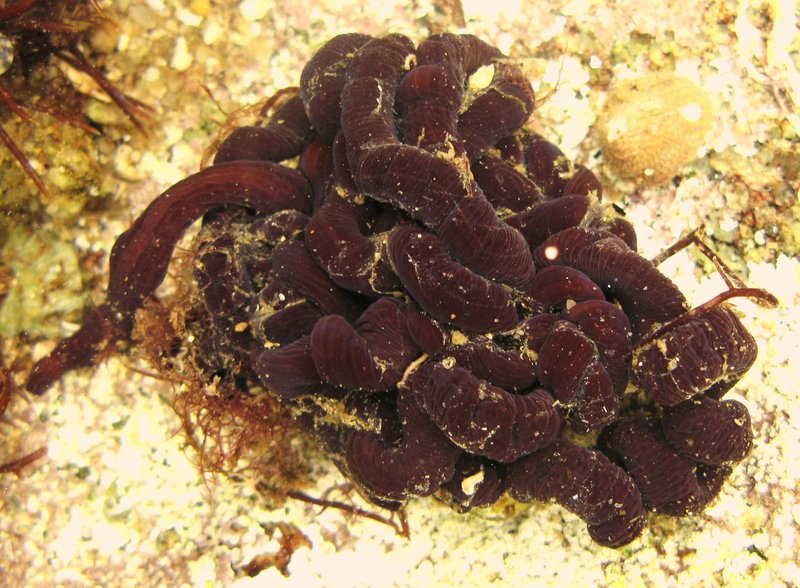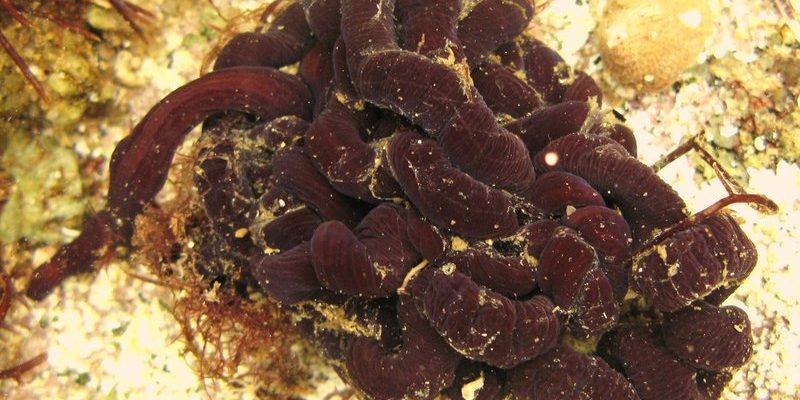
Bootlace worms are part of the *Lineus* genus and are known for their incredible lengths, with some individuals recorded at over 55 meters (that’s about 180 feet!). To put that into perspective, that’s like having a giant noodle swimming around in the ocean! These creatures not only challenge our understanding of what worms can be, but they also highlight the amazing biodiversity of our oceans. Let’s dive deeper into the world of bootlace worms and explore the longest individuals recorded.
What Are Bootlace Worms?
Bootlace worms are fascinating animals that belong to the phylum Annelida, which makes them relatives of earthworms and leeches. The name “bootlace worm” comes from their long, thin shape, which can resemble shoelaces or bootlaces. They primarily inhabit cold waters, often hiding in the murky depths of the ocean floor.
One of the standout features of bootlace worms is their striking coloration. Many of them exhibit bright hues—think electric blues and vibrant yellows. This isn’t just for show; their colors can signal other marine creatures about their potentially toxic nature. So, if you ever see one, remember, it might look pretty, but it could also be packing a punch!
These worms are exclusively marine, and they thrive in soft substrates like mud and sand. They can usually be found at various depths, from shallow coastal areas to deep-sea environments. But what’s more interesting is how they move. Bootlace worms can stretch and contract their bodies, which allows them to navigate through their surroundings with incredible agility.
The Length Records of Bootlace Worms
Now, let’s get to the juicy part: just how big can these worms get? The length of bootlace worms is nothing short of astonishing. In fact, the longest bootlace worm ever recorded was found in Scotland and measured a staggering 55 meters (180 feet). Imagine trying to fit that creature in your backyard!
This record-breaking length makes bootlace worms one of the longest animals on the planet. For comparison, the blue whale, the largest mammal, reaches around 30 meters (98 feet) on average. So, in length terms, you could say the bootlace worm is a true heavyweight champion of the worm world!
These lengthy creatures have evolved to be so lengthy likely to navigate their environment and optimize their feeding strategies. They have a unique feeding mechanism where they use their extensive length to capture small fish and crustaceans. It’s like having a fishing line that can stretch endlessly!
Where Are Bootlace Worms Found?
Bootlace worms thrive in various marine environments, particularly in cold waters. You’ll often find them in the North Atlantic Ocean, specifically around the British Isles and up toward Norway. They prefer areas rich in organic material, often burrowing into soft sediment where they can find food and protection.
Interestingly, these worms can also be found in deeper waters, where they can grow even longer due to the lack of predators. The cold, dark environments of the ocean depths provide just the right conditions for bootlace worms to live without much threat, allowing them to reach their incredible lengths.
While you might not encounter bootlace worms in your local beach, they play an important role in their ecosystems. Their presence helps maintain the balance of marine life, and they serve as food for various ocean predators, including fish and larger invertebrates.
How Do Bootlace Worms Reproduce?
When it comes to reproduction, bootlace worms have some unique traits. Unlike many animals, they are hermaphrodites, meaning each individual has both male and female reproductive organs. This allows them to be quite flexible in mating, which can be advantageous in their often-sparse environments.
During mating, two bootlace worms will align their bodies and exchange sperm. After this, the fertilized eggs develop into larvae, which eventually settle on the ocean floor and grow into adult bootlace worms. This process can take some time, but it ensures that the species continues to thrive in the ocean.
Here’s the thing: the long lengths of bootlace worms may also play a role in reproduction. Their size allows them to reach more potential mates and increase the chances of successful reproduction. So, in a way, being long isn’t just about catching prey; it’s also about love!
Bootlace Worms: Myths and Misconceptions
Despite their long, slimy appearance, bootlace worms are often misunderstood. One common myth is that they’re dangerous or venomous. While they do possess toxic elements, they aren’t generally harmful to humans unless provoked. It’s crucial to respect their space and leave them be if you happen to see one.
Another misconception is that all bootlace worms are incredibly long. While they can reach impressive lengths, not every bootlace worm will be a record-breaker. The length can vary significantly among individuals. Factors such as environmental conditions, age, and diet can influence how long they grow.
Finally, some people may think that these worms cannot be found near shore. In reality, while they prefer deeper waters, juvenile bootlace worms can often be found closer to the coastline in sediment-rich areas. So, who knows? If you’re ever digging in the sand, you might just uncover a baby bootlace worm!
Why Do Bootlace Worms Matter?
Bootlace worms might not be the first species that come to mind when you think about marine life, but they are vital for maintaining healthy ocean ecosystems. They help decompose organic material that settles on the ocean floor, turning it into nutrients that can sustain various marine life forms.
Moreover, studying bootlace worms contributes to our understanding of biodiversity and evolutionary biology. Their unique adaptation strategies and remarkable lengths challenge our perceptions of what it means to be a worm. By learning more about them, we can better appreciate the complexities of ocean life.
Conservation efforts aimed at protecting marine habitats also benefit bootlace worms. As we work to preserve their environments, we indirectly support the many species that rely on these fascinating creatures for food and ecological balance.
Bootlace worms truly are one of nature’s wonders, stretching the limits of what we believe about worms. With lengths that can outstrip even the largest mammals, they capture our curiosity and imagination. Understanding their biology, behavior, and role in marine ecosystems helps us appreciate the incredible diversity of life in our oceans.
So, the next time you think of a worm, remember that it could be a bootlace worm, silently stretching across the ocean floor, playing its part in the intricate web of sea life. There’s so much more to discover about these incredible creatures, and I hope this peek into the world of bootlace worms has sparked your interest to learn more!

